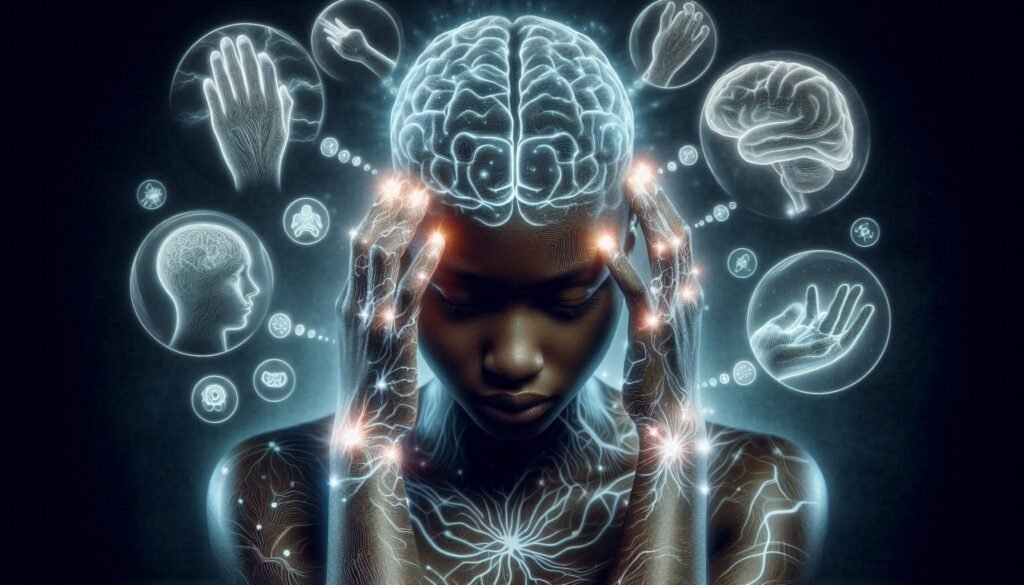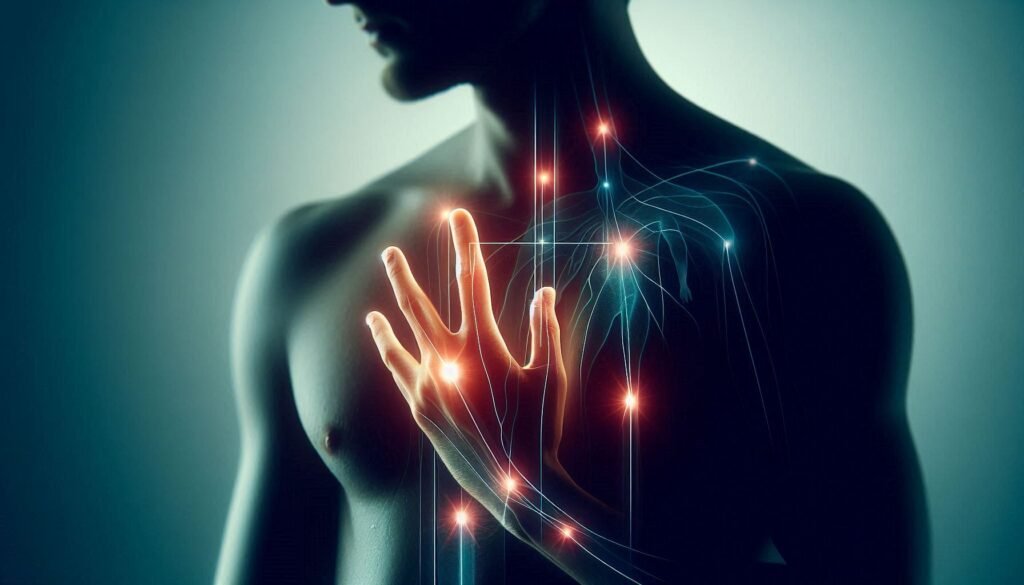Paresthesia is a term that often raises eyebrows. It describes the tingling, prickling sensation that many of us have experienced at some point in our lives. But did you know that these symptoms can vary significantly across different age groups? Understanding how paresthesia manifests from childhood to old age can shed light on its underlying causes and treatment options.
Whether it’s a child feeling “pins and needles” after sitting too long or an elderly person experiencing numbness due to nerve damage, each stage of life brings unique considerations. Factors such as lifestyle choices, hormonal changes, genetic predispositions, and even environmental influences play crucial roles in shaping these sensations.
In this comprehensive guide, we will explore how paresthesia symptoms differ between age groups. By examining the distinct presentations and challenges associated with children, adolescents, adults, and seniors alike, we aim to empower readers with knowledge for better management and understanding of this complex condition. Let’s dive into the world of paresthesia!

Paresthesia in Children: Unique Considerations and Presentations
Paresthesia in children often presents differently than it does in adults. Kids may experience tingling or numbness mainly due to growth spurts, pressure on nerves from awkward positions, or even anxiety. These sensations can be fleeting and are typically not linked to serious health issues.
One unique consideration is that children’s nervous systems are still developing. This means their responses to stimuli can vary widely. For instance, a child might report feelings of “pins and needles” after sitting cross-legged for too long without any underlying medical cause.
Certain conditions such as vitamin deficiencies or infections can also contribute to paresthesia symptoms in young ones. Parents should be vigilant about these factors and consult healthcare providers if symptoms persist.
Additionally, psychological aspects like stress or trauma could manifest as physical sensations in children. Understanding the context behind these feelings is essential for proper assessment and management tailored specifically for younger patients.
Adolescents and Young Adults: Common Causes and Manifestations
Adolescents and young adults often experience paresthesia due to a mix of lifestyle factors and physiological changes. Stress, anxiety, and prolonged periods of sitting can lead to temporary numbness or tingling sensations. The pressures of school and work contribute significantly to these symptoms.
In this age group, conditions such as carpal tunnel syndrome are becoming increasingly common. Frequent use of smartphones and computers puts strain on the wrists, resulting in discomfort that may manifest as tingling in the fingers or hands. Poor posture during study sessions can exacerbate these issues.
Nutritional deficiencies also play a role in paresthesia among younger individuals. A lack of essential vitamins like B12 can lead to nerve-related symptoms. This is particularly concerning for those following restrictive diets without proper nutritional guidance.
Additionally, sports injuries may cause localized nerve compression or damage, leading to transient or chronic paresthetic symptoms. Recognizing these causes early is crucial for effective management and treatment options tailored specifically for this demographic.
Middle-Age Onset: Lifestyle Factors and Chronic Conditions
Middle-aged individuals often experience an increase in paresthesia symptoms due to a combination of lifestyle factors and chronic conditions. Sedentary habits, common during this stage of life, can lead to poor circulation and nerve compression. As physical activity decreases, the risk for issues like carpal tunnel syndrome also rises.
Chronic health conditions play a significant role as well. Diabetes is particularly notable; it can cause diabetic neuropathy, resulting in tingling or numbness in extremities. Similarly, hypertension and cardiovascular diseases can contribute to reduced blood flow, exacerbating paresthetic sensations.
Weight gain and obesity are additional contributors that place extra pressure on nerves and joints. Poor posture from prolonged sitting at desks further complicates the issue by increasing strain on nerve pathways.
Stress levels often peak during middle age due to work-life balance challenges. This stress may heighten sensitivity to pain signals, intensifying feelings of tingling or numbness across various body parts.
Paresthesia in the Elderly: Age-Related Changes and Risks
As people age, they often experience various neurological changes that can lead to paresthesia. These sensations—tingling, prickling, or numbness—may arise due to natural wear and tear on the nervous system. Conditions like neuropathy become increasingly common in older adults.
One major risk factor for paresthesia in this age group is cardiovascular health. Reduced blood flow can affect nerve function, leading to uncomfortable sensations in extremities. Additionally, diabetes becomes a significant concern as it can cause diabetic neuropathy.
Age-related conditions such as arthritis may also contribute to nerve compression and irritation. When joints deteriorate with age, nerves nearby may become trapped or inflamed, resulting in paraesthesia symptoms.
Furthermore, medication side effects play a crucial role in how elderly individuals perceive these sensations. Many medications designed for chronic conditions have neurotoxic profiles that could exacerbate feelings of tingling or numbness over time.
Hormonal Influences: Paresthesia Across Different Life Stages
Hormonal changes can significantly influence paresthesia symptoms throughout various life stages. In children, hormonal fluctuations during puberty may lead to temporary sensations of tingling or numbness due to rapid growth and nerve development.
For women, menstrual cycles often correlate with increased sensitivity in the nervous system. Hormonal shifts related to menstruation, pregnancy, and menopause can heighten or trigger paresthesia episodes. These experiences are not uncommon and might resolve as hormone levels stabilize.
In men, testosterone levels can also play a role in nerve function and health. Low testosterone has been linked to increased fatigue and neuropathy-like symptoms that could present as paresthesia.
Understanding these hormonal influences is crucial for managing symptoms effectively across different age groups. Recognizing when these changes occur helps both patients and healthcare providers address underlying issues more accurately.
Genetic Factors: How Age Impacts Hereditary Paresthesia Conditions
Genetic factors play a significant role in the occurrence of paresthesia, particularly as individuals age. Some hereditary conditions predispose younger patients to experience symptoms earlier in life. For instance, Charcot-Marie-Tooth disease often manifests during childhood or adolescence with tingling and numbness.
As people transition into middle adulthood and later years, these genetic conditions may evolve. Symptoms can become more pronounced due to accumulated stress on the nervous system over time. This evolution varies widely among individuals based on their specific genetic makeup.
Furthermore, age-related degeneration can compound hereditary issues. As nerve function declines naturally with aging, those already prone to hereditary paresthesia might find their symptoms exacerbated by this decline.
Research shows that certain genes linked to neuropathies are expressed differently at various life stages. Understanding these variations is crucial for timely diagnosis and effective management tailored to each age group’s unique needs.
Diagnostic Challenges: Age-Specific Approaches to Paresthesia
Diagnosing paresthesia can be particularly challenging due to its varied presentations across different age groups. In children, symptoms may mimic other conditions like growing pains or anxiety disorders, making accurate diagnosis more complex. Pediatricians often rely on thorough histories and physical examinations to differentiate these symptoms.
Adolescents and young adults face their own set of challenges. Stressors such as academic pressure or lifestyle habits might contribute to paresthesia but can easily be overlooked in favor of psychological causes. A comprehensive assessment is vital for uncovering underlying issues.
For middle-aged individuals, chronic conditions like diabetes or multiple sclerosis frequently play a role in the development of paresthetic symptoms. Physicians must consider both medical history and lifestyle factors when diagnosing this demographic.
In elderly patients, age-related changes complicate the diagnostic process further. Symptoms may overlap with neurodegenerative diseases or vascular issues, necessitating advanced imaging techniques and specialized evaluations for effective identification of paresthesia’s root cause.
Treatment Strategies: Tailoring Interventions to Different Age Groups
Effective treatment for paresthesia requires a tailored approach based on the patient’s age. Children often respond well to non-invasive therapies, such as physical therapy and occupational support. These strategies can help alleviate symptoms while fostering healthy development.
In adolescents and young adults, addressing lifestyle factors is crucial. Stress management techniques, ergonomic adjustments during study or work hours, and proper hydration play significant roles in symptom relief. Additionally, education about posture can reduce strain that leads to paresthetic sensations.
For middle-aged individuals, it’s essential to consider chronic conditions like diabetes or multiple sclerosis that may contribute to symptoms. Medication management alongside lifestyle changes—such as diet modifications and exercise—can mitigate risks associated with these underlying issues.
The elderly population may require a more comprehensive strategy involving medication adjustment and regular monitoring of nerve health. Gentle exercises combined with routine check-ups can help manage their symptoms effectively while improving overall quality of life.
Prevention and Management: Age-Appropriate Lifestyle Modifications
Preventing and managing paresthesia symptoms requires tailored lifestyle modifications that suit different age groups. For children, encouraging regular physical activity can improve circulation and nerve health. Simple exercises like stretching or playing outside promote overall well-being.
Adolescents and young adults should focus on maintaining ergonomic workspaces, especially if they spend long hours studying or using devices. Taking breaks is essential to avoid repetitive strain injuries that may lead to numbness or tingling sensations.
In middle age, adopting a balanced diet rich in vitamins B12 and D can support nerve function. Staying hydrated is equally important; dehydration can exacerbate paresthesia symptoms. Regular check-ups with healthcare professionals help monitor any underlying conditions.
For the elderly, gentle exercises such as yoga or walking enhance blood flow while reducing the risk of falls due to balance issues. Additionally, staying socially connected mitigates stress levels, which can also trigger nerve-related problems.
Long-term Outlook: How Age Affects Paresthesia Prognosis
The long-term outlook for paresthesia varies significantly by age group and the underlying causes of symptoms. For children, many cases are temporary and linked to minor conditions or developmental changes. As individuals transition into adolescence and young adulthood, lifestyle factors such as posture, physical activity levels, and stress can contribute to chronic issues; however, with appropriate management, these often improve.
In middle-aged adults, the onset of chronic diseases like diabetes or multiple sclerosis may lead to persistent paresthesia that requires ongoing treatment strategies. The prognosis tends to be less favorable in older adults due to age-related degeneration in nerves and blood vessels. This demographic faces higher risks for complications related to untreated paresthesia.
Additionally, hormonal fluctuations through different life stages can influence symptom severity and frequency. Genetic predispositions also play a role in how individuals experience these sensations over time.
Understanding the unique challenges posed by various age groups is crucial for effective diagnosis and treatment planning. Tailoring interventions based on age-specific needs increases the chances of better outcomes while enhancing quality of life for those affected by this complex condition. Monitoring symptoms closely throughout each stage can provide valuable insights into managing this multifaceted issue effectively.


